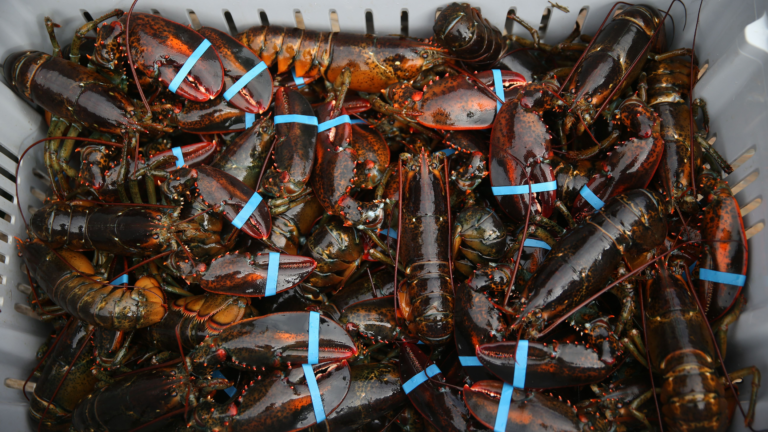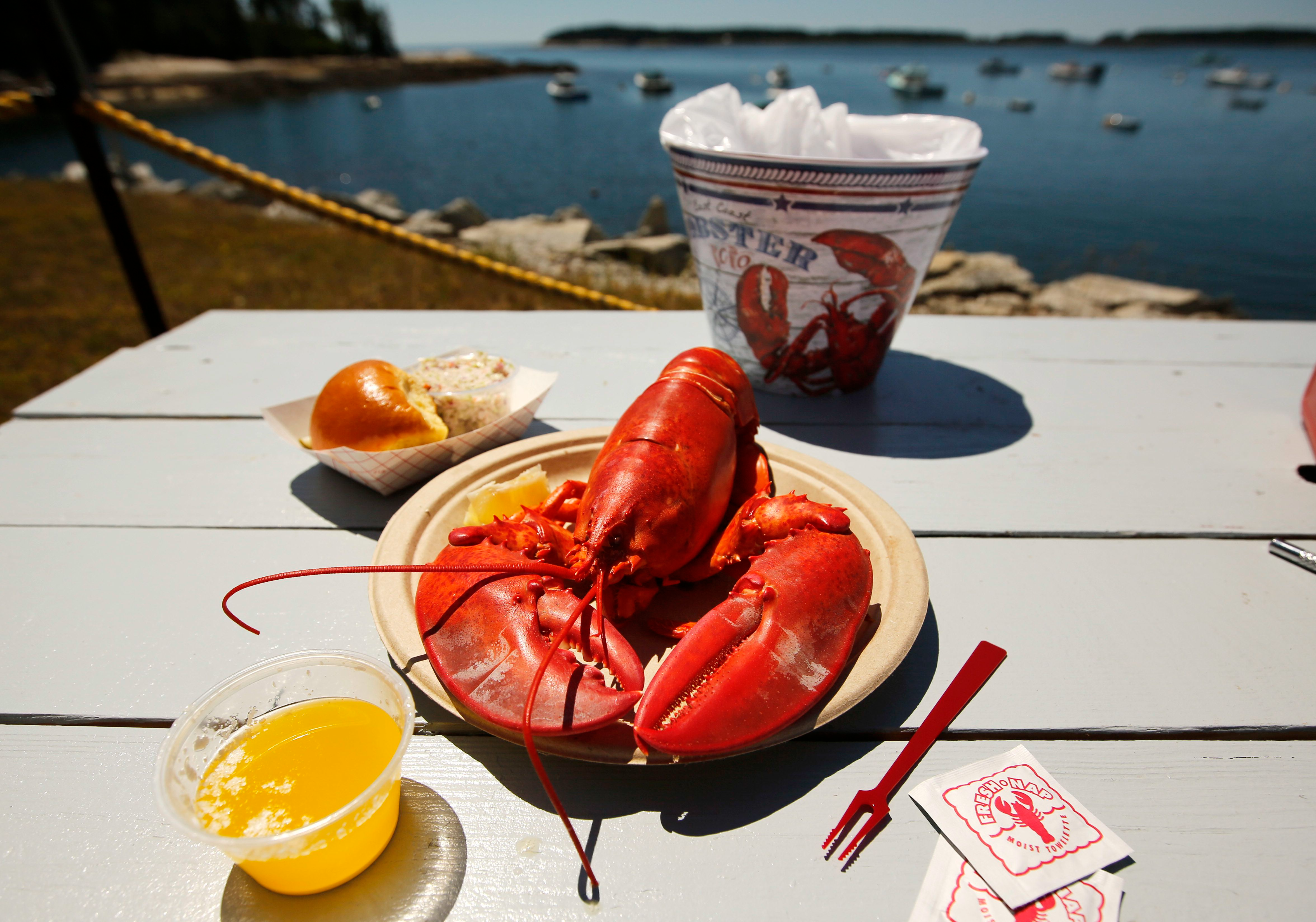Did New England prisoners really eat lobster in colonial times?
Wickedpedia
Legend has it the crustacean was once so plentiful — and held in such low esteem — that it was served as prison food. But is that true?

New Englanders love lobster. It’s been a part of the region’s culinary DNA for as many as 2,000 years, dating back to the indigenous Penobscot and Wabanaki peoples’ early lobster bakes.
Sometime between then and now, the thickly carapaced bottom dweller earned a reputation as the most sophisticated shellfish. It doesn’t look delicious — it looks like a prehistoric underwater cockroach. But when cooked properly, lobster meat tastes sweet and tender and perfectly rich. Add some drawn butter to the equation? Yum.

Over the years, though, a host of historians and bloggers have claimed that the top-shelf crustacean was once so plentiful — and held in such low esteem — as to be served only to the poor, servants, and prisoners.
“Dirt-cheap because they were so copious, lobsters were routinely fed to prisoners, apprentices, slaves and children during the colonial era and beyond,” one such account reads.
“Lobsters were considered the ‘poor man’s chicken’ and primarily used for fertilizer or fed to prisoners and slaves,” another declares.
Upon closer inspection, these (referenceless) reports sound a bit far-fetched. Even if you grant that lobster used to be more abundant and less expensive, it’s still complicated and labor-intensive to prepare. Boston.com asked a few experts for their take on the local legend.
Sandy Oliver, a food historian and writer based in Isleboro, Maine, shared our suspicions: “Who the hell is going to pick all the meat off the lobster to produce enough for a prison full of people?”
What did colonial prisoners eat?
Keith Stavely and Kathleen Fitzgerald have co-written several books and essays about American food history, including the 2015 title “America’s Founding Food: The Story of New England Cooking” and “Northern Hospitality: Cooking by the Book in New England.”
In the course of their research for these volumes, the Rhode Island-based husband and wife came across the lobster-as-prison-food story but found no hard evidence in the historical record to support it. In an email to Boston.com, they explained what they were — and weren’t — able to prove.
New England prisoners may have been fed lobster every once in a while “if they were imprisoned near the coast where lobsters were plentiful,” Stavely and Fitzgerald allowed, because “lobsters were a valued but not a luxury food until the 20th century. But lobster was never the prisoners’ steady diet.”
The historians found that during the 17th century, after the first European colonists arrived in New England, most prisoners were fed simple, inexpensive food: salt pork, baked beans, salt cod, brown bread, and maybe hardtack (a dense cracker with a long shelf life).
“These were the cheap, calorie-dense, easily preserved and easily prepared foods of the region,” Stavely and Fitzgerald wrote. “Cabbage was the most common vegetable, and potatoes would have been served by the 19th century.”
Lobster, on the other hand, was “tricky to transport (if they died en route they were no good for human consumption), cumbersome to prepare, requiring large kettles (that’s why many urban shoppers brought them home already cooked), and then there would be the problem of disposal of massive amounts of shells.”
Oliver, the historian from Maine, did her own digging and found no contemporaneous references to New England prisoners eating lobster during the 17th or 18th centuries. And when the story did materialize in town histories later on, it wasn’t even initially about lobster.
“The punchline … is that the story was never told about lobster until the 20th century,” she explained. “The story was told with practically the same language, same personnel, same geography, same everything about salmon in the 1800s. And it wasn’t true about salmon either!”
Was lobster always so popular?
In 1623, during a period of food scarcity in Plymouth Colony (in present-day Plymouth, Massachusetts), the colonial governor William Bradford wrote an oft-cited letter complaining that the “best dish” the settlers could prepare was “a lobster or a piece of fish without bread [or] anything else but a cup of fair spring water.”
Historians took this detail and ran with it, claiming lobster was considered a poor man’s food at that time. But Stavely and Fitzgerald argue that “Bradford’s comment has overshadowed the real evaluation of lobster in the early days.”
Other accounts offer a more balanced view: “Edward Winslow, another observer writing from Plymouth Colony back to England in 1621 … bragged that ‘our Bay is full of Lobsters all the Summer.’” Stavely and Fitzgerald wrote. “And a few years later in Salem, Massachusetts, Francis Higginson boasted that ‘the least Boy in the Plantation may both catch and eat what he will’ of lobsters.”
Higginson did say he “was soon cloyed with them,” but only because “they were so great, and fat, and luscious.”
From the 18th century onward, lobster’s social caché only grew. Lobster meat began showing up in stews, in sauces, and to enhance the flavor of fish dishes. Potted lobster and lobster pie appeared in 19th-century recipe books.
“The consumer demand for lobster was definitely on the rise in the 19th century, making lobster valuable for sale,” Stavely and Fitzgerald wrote. By then, lobster could be shipped from Maine to Boston, New York, and other East Coast commercial centers. It arrived alive and could be sold and cooked fresh. “While this shellfish was still relatively inexpensive … it was certainly not disdained as poor man’s food,” they wrote.
Fast forward to the present day. Centuries of lobster hype have depleted the populations along New England’s coast. Climate change has compounded the problem, driving the remaining populations north in search of cooler temperatures. But lobster, whether boiled, baked, or served up on a roll, remains a regional staple with its very own mythology.
The stories we tell about our food, Oliver believes, reveal more about us than the food.
“The bottom line is when something like salmon or lobster starts to become a little more scarce, stories arise about how, you know, ‘People in those days were so dumb, they didn’t know what a wonderful thing salmon was, they didn’t know what a wonderful thing lobster was!’” Oliver laughed. “It’s a way for the people who are telling the story to feel better about themselves, to feel smarter and more knowledgeable.”
Newsletter Signup
Stay up to date on all the latest news from Boston.com